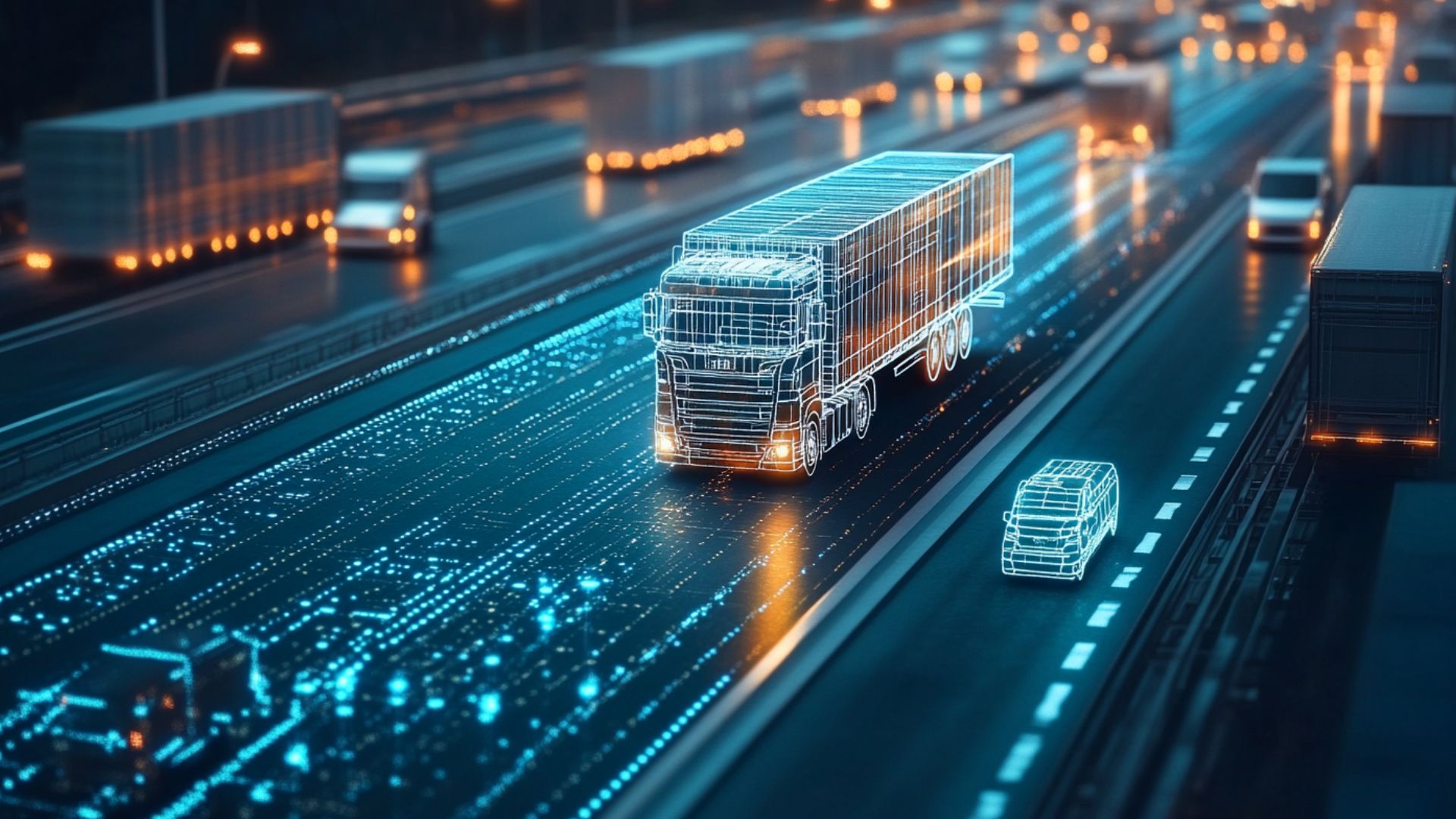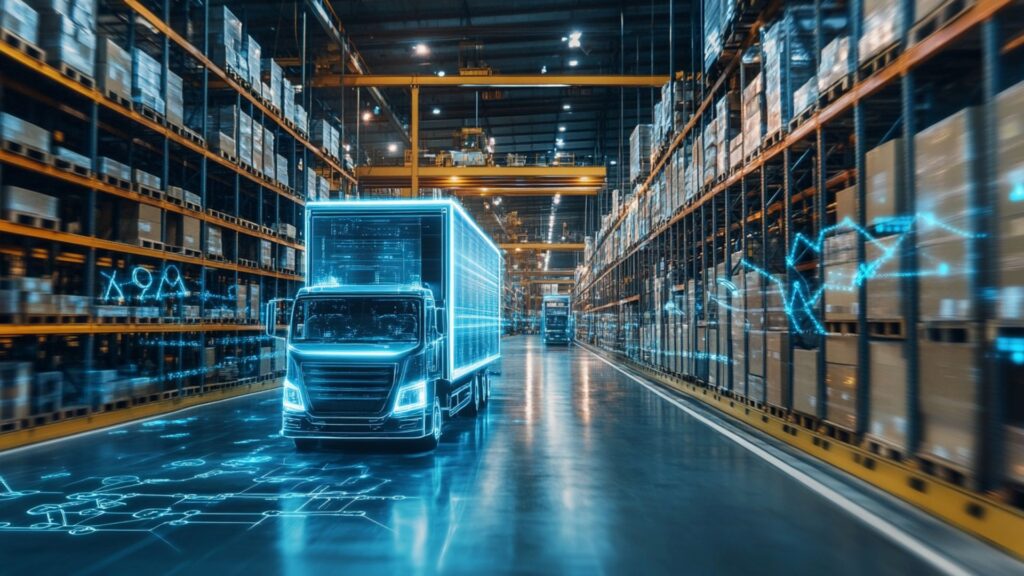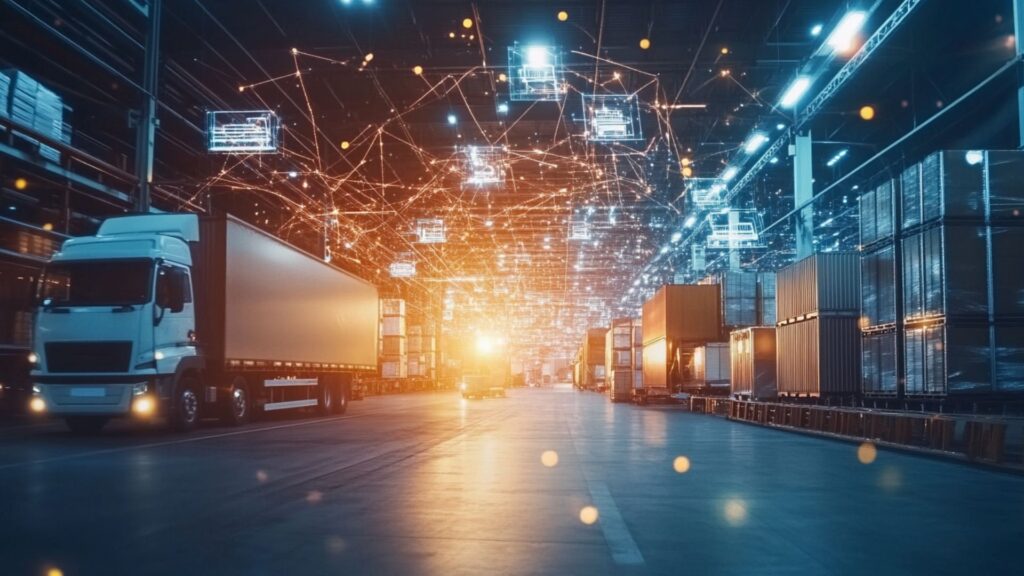AI in Logistics and Transportation: Supply Chain Optimization

Artificial intelligence is revolutionizing logistics and transportation, transforming how companies manage supply chains, deliver products, and serve customers. From predictive analytics that forecast demand to autonomous vehicles that transport goods, AI technologies are driving unprecedented efficiency improvements across the industry. Companies implementing AI-powered solutions benefit from optimized route planning, reduced delivery times, improved inventory management, and real-time supply chain visibility that prevents shortages and excess stock.
AI enhances operational efficiency while significantly reducing costs and improving delivery reliability. In transportation specifically, AI systems analyze traffic patterns, weather conditions, and vehicle performance to make intelligent routing decisions that save time and fuel. Businesses leveraging AI in logistics gain competitive advantages in an increasingly demanding market where customers expect faster deliveries and real-time tracking. By automating routine tasks, AI allows employees to focus on strategic decision-making and customer service rather than manual data processing. The technology minimizes human errors, improves accuracy, and scales operations to handle growing order volumes. Investing in artificial intelligence logistics solutions enables companies to consistently meet delivery commitments while controlling costs and expanding market reach.
Predictive Analytics and Demand Forecasting
Predictive analytics powered by artificial intelligence is revolutionizing how companies optimize supply chain operations. By analyzing historical sales data, identifying market trends, examining seasonal fluctuations, and incorporating external factors like economic indicators, AI systems forecast future demand with remarkable accuracy. This capability helps suppliers and distributors make informed decisions about inventory levels, production schedules, and resource allocation. The role of artificial intelligence in logistics processes vast datasets to identify patterns humans might miss, reducing the risk of product shortages while preventing costly excess inventory that ties up capital and warehouse space.
Key benefits of AI-driven predictive analytics include:
- Improved inventory management: AI forecasts help companies maintain optimal inventory levels, ensuring products are available when customers need them while reducing storage costs associated with overstock. This balance between availability and efficiency drives profitability across the supply chain.
- Enhanced operational planning: Predictive insights enable better resource allocation and smarter purchasing decisions. Companies can coordinate with suppliers more effectively, scheduling shipments and production runs based on anticipated demand rather than reactive ordering patterns that create inefficiencies.
- Reduced stockouts and backorders: AI models identify potential shortages before they occur by analyzing demand trends and lead times. This proactive approach increases customer satisfaction by ensuring product availability, preventing lost sales, and maintaining brand reputation when competitors face supply constraints.
- Data-driven decision making: AI in logistics examples provides actionable insights by synthesizing information from multiple sources — point-of-sale systems, market indicators, economic trends, and even social media sentiment. These comprehensive analyses improve strategic planning across procurement, distribution, and sales channels.
Modern predictive analytics platforms integrate seamlessly with existing point-of-sale systems, enterprise resource planning software, and supply chain management tools. The algorithms continuously learn and adapt to changing conditions in real-time, adjusting forecasts based on shifts in consumer behavior, economic fluctuations, supply chain disruptions, and competitive dynamics. This adaptability ensures predictions remain accurate even as market conditions evolve, giving companies the agility to respond quickly to unexpected changes while maintaining operational stability.
Route Optimization and Fleet Management
AI-based route optimization dramatically improves logistics operations by helping companies plan the most efficient delivery routes possible. Advanced algorithms analyze multiple variables simultaneously — historical traffic patterns, real-time congestion data, weather conditions, vehicle capacity, delivery windows, and customer priorities. This comprehensive analysis eliminates unnecessary mileage, avoids delays, and ensures timely product delivery while reducing fuel consumption and vehicle wear. How is AI improving logistics? By enabling real-time route adjustments and intelligent resource allocation that were impossible with traditional planning methods, AI transforms delivery efficiency and operational performance.
Beyond route planning, AI in logistics and transportation transforms fleet management by providing real-time visibility into vehicle locations, speeds, and performance metrics. GPS integration combined with predictive analytics detects inefficiencies and schedules preventive maintenance before breakdowns occur. This proactive approach maximizes vehicle utilization, extends asset lifespans, and prevents costly emergency repairs.
Key benefits of AI-powered route optimization:
- Reduced fuel costs: Optimized routes minimize unnecessary mileage and idle time, directly reducing fuel expenses. For large fleets, these savings compound significantly, improving profit margins while reducing environmental impact through lower emissions.
- Faster delivery times: AI calculates the quickest routes around congested areas, construction zones, and known bottlenecks. This speed advantage helps companies meet tight delivery windows and exceed customer expectations for quick service.
- Improved fleet efficiency: Vehicles are assigned based on load capacity, delivery schedules, and geographic proximity. This intelligent matching reduces empty miles — trips where vehicles travel without cargo — maximizing productivity per vehicle and allowing companies to handle more deliveries with fewer assets.
- Enhanced customer satisfaction: Accurate estimated arrival times improve transparency and reliability. Customers receive realistic delivery windows and real-time updates, building trust in logistics providers and encouraging repeat business through dependable service.
- Predictive maintenance: AI in transportation and logistics continuously monitors vehicle health, predicting service needs before failures occur. Dynamic rerouting capabilities allow rapid adjustments to changing traffic conditions, ensuring deliveries stay on schedule even when unexpected obstacles arise.
Autonomous Vehicles and Drones
Autonomous vehicles and delivery drones are rapidly transforming logistics operations by reducing labor costs, improving delivery speed, and expanding service capabilities. These AI in logistics examples use sophisticated algorithms, sensors, cameras, and radar systems to navigate safely in diverse conditions while avoiding obstacles and adapting to changing environments. Companies deploying autonomous trucks for long-haul transportation and autonomous vans for last-mile delivery can scale operations more efficiently than traditional models, maintaining service levels during peak demand periods without proportional increases in labor costs.
Key applications and benefits include:
- Autonomous trucks: Long-haul trucks equipped with artificial intelligence in logistics navigation systems optimize routes across interstate highways, maintaining consistent speeds and following traffic patterns precisely. Advanced sensor arrays, including radar, lidar, and camera systems, enable safe operation while reducing driver fatigue-related accidents. These trucks can operate for longer hours than human drivers, significantly increasing asset utilization.
- Autonomous delivery vehicles: Self-driving vans and small vehicles handle last-mile delivery in urban and suburban areas. Integrated with intelligent dispatch systems, these vehicles efficiently deliver parcels to residential and commercial addresses, navigating complex traffic environments and parking challenges that traditionally required human judgment.
- Delivery drones: Aerial drones equipped with obstacle-avoidance technology and real-time tracking deliver small packages quickly over short distances. Drones excel in congested urban areas where ground traffic creates delays, and in rural regions where conventional delivery is expensive due to long distances between stops.
Dynamic Routing and Real-Time Decision Making
Unlike traditional static routing, AI in logistics and transportation continuously adapts to changing conditions in real time. These intelligent systems monitor traffic flows, road closures, weather disruptions, and urgent delivery requests, automatically adjusting routes to maintain on-time performance. By integrating GPS tracking, telematics data, and Internet of Things sensors, AI provides constant visibility into vehicle locations and delivery progress while analyzing conditions that might impact schedules.
Machine learning models process both historical patterns and current data to predict potential issues and proactively optimize decisions. Companies can prioritize urgent shipments, reroute around accidents or severe weather, and respond to last-minute customer requests without manual dispatcher intervention. This automation increases efficiency and customer satisfaction by ensuring reliable service even in unpredictable conditions.
Key advantages of dynamic routing include:
- Increased delivery reliability: Automatic route adjustments avoid congestion and delays, ensuring on-time delivery even when original plans become impractical due to changing conditions. This reliability builds customer trust and reduces service failures.
- Enhanced operational flexibility: Vehicles and tasks can be reassigned in real-time to meet shifting priorities. If urgent orders arrive or delays occur, the system optimizes the entire fleet's routes simultaneously to maintain overall performance.
- Lower operational costs: Continuous AI in logistics reduces total mileage and fuel consumption. By avoiding traffic jams and selecting efficient paths, companies save money while accelerating deliveries and handling more orders with existing resources.
- Improved customer experience: Accurate estimated arrival times, updated in real time, keep customers informed and manage expectations effectively. Transparency about delivery status reduces customer service inquiries and increases satisfaction.
- Proactive risk management and scalability: The system manages large fleets and complex delivery networks without requiring proportional increases in human oversight, enabling efficient business growth.
Benefits of AI in logistics extend beyond immediate operational improvements to include long-term strategic advantages such as enhanced adaptability, reduced risk exposure, and the ability to scale operations seamlessly as business demands increase.
Inventory Management and Warehouse Automation

AI-driven inventory management and warehouse automation are transforming how companies track stock, fulfill orders, and coordinate supply chain activities. Modern warehouses deploy intelligent systems that monitor inventory in real-time, predict replenishment needs, and optimize order fulfillment processes. Artificial intelligence logistics integration provides comprehensive visibility across multiple warehouse locations, distribution centers, and retail stores, enabling coordinated decision-making that prevents both stockouts and excess inventory.
Core capabilities of AI-powered warehouse systems:
- Inventory tracking: AI systems simultaneously monitor stock levels across multiple locations, detect discrepancies, and maintain accurate records. This visibility minimizes the risk of inventory errors that lead to stockouts or overstock situations.
- Automated picking: Robotic systems equipped with AI navigate warehouses, locate products efficiently, and retrieve items for order fulfillment. This automation reduces manual labor requirements while accelerating order processing and maintaining consistent accuracy.
- Predictive replenishment: AI analyzes historical sales data, seasonal trends, promotional calendars, and market conditions to accurately forecast inventory needs. This foresight prevents shortages during high-demand periods while avoiding excess stock that ties up capital.
Integration AI in logistics and supply chain platforms ensures seamless data flow between warehouse management, purchasing, suppliers, and retailers. This coordination improves inventory turnover, reduces carrying costs, and enhances collaboration across the supply chain.
Primary benefits include:
- Improved accuracy: Automation minimizes human errors in inventory tracking and order fulfillment, supporting high transaction volumes in e-commerce and multi-channel retail environments where accuracy is critical for customer satisfaction.
- Increased speed: Automated systems reduce order processing time and respond quickly to demand changes, enabling same-day or next-day delivery commitments that meet modern customer expectations.
- Enhanced labor efficiency: By automating repetitive manual tasks, automation allows warehouse staff to focus on exception handling, quality control, and value-added activities rather than on routine picking and tracking.
Robotics and Automated Sorting
AI logistics are revolutionizing warehouse operations and materials handling. Robots equipped with advanced algorithms, sensors, and machine vision can accurately identify, sort, and transport goods at high speeds. This automation reduces physical strain on workers, minimizes errors, and dramatically improves throughput in high-volume distribution centers.
Key robotic applications in warehouses:
- Automated sorting: Robots classify goods by size, weight, destination, and priority, processing thousands of items per hour with minimal errors. This capability accelerates order fulfillment cycles while reducing misshipments that damage customer relationships.
- Intelligent packaging: Robotic systems with computer vision select appropriate box sizes, pack items efficiently, and apply shipping labels accurately. Consistent packaging standards protect products during transit while minimizing dimensional weight charges.
- Goods transportation: Automated guided vehicles (AGVs) and autonomous mobile robots move inventory between storage areas, picking stations, and loading docks. These systems optimize warehouse flow, reduce congestion in high-traffic areas, and operate continuously without breaks.
Smart Inventory Forecasting
The role of artificial intelligence in logistics transforms supply chain management by predicting demand patterns and optimizing stock levels across the distribution network. These systems analyze historical sales data, seasonal trends, promotional calendars, market conditions, and external factors such as weather and economic indicators. By integrating predictive analytics with inventory management software, companies maintain optimal stock levels — ensuring product availability while avoiding the costs and waste associated with excess inventory.
Key capabilities of artificial intelligence logistics inventory forecasting:
- Demand prediction: Machine learning models analyze past sales trends and external factors to forecast future demand accurately. This capability helps businesses prepare for seasonal peaks, promotional events, and market shifts while avoiding stockouts during high-demand periods.
- Inventory optimization: AI recommends precise reorder quantities and optimal purchase order timing, reducing storage costs while freeing warehouse space for faster-moving products. These recommendations balance holding costs against stockout risks.
- Waste reduction: Accurate forecasting prevents spoilage of perishable goods and obsolescence of seasonal items, improving both sustainability and cost efficiency. Companies reduce write-offs while maintaining fresh inventory.
- ERP system integration: Seamless connections with enterprise systems and supply chain platforms combine forecasting data with purchasing workflows, enabling coordinated decision-making across procurement, warehousing, and sales departments.
- Enhanced profitability: Minimizing lost sales from stockouts while reducing unnecessary inventory carrying costs improves cash flow and overall operational efficiency. Better inventory turns increase return on invested capital.
- Scenario planning: AI models simulate demand under various conditions — economic changes, competitive actions, supply disruptions — allowing companies to develop proactive strategies that reduce risks and maintain service levels regardless of market volatility.
Challenges and Risk Management in AI Logistics

Despite AI in transportation and logistics benefits, implementation presents significant challenges requiring careful management. Companies must address data security, system reliability, implementation costs, workforce adaptation, and regulatory compliance.
Data security vulnerabilities create risks of breaches and privacy violations. System failures — from predictive errors to sensor malfunctions — can cascade through supply chains, disrupting operations. High initial investments in technology and infrastructure strain budgets, with ROI potentially taking years. Employee resistance and skill gaps slow adoption, while evolving regulations governing autonomous vehicles and data processing require constant monitoring across jurisdictions.
Effective mitigation strategies include robust cybersecurity — encryption, access controls, and regular audits — to protect sensitive data. Proactive maintenance with redundant systems and testing protocols minimizes downtime. Phased implementation through pilot programs reduces financial risk while building capabilities. Comprehensive training and change management increase adoption success. AI logistics compliance monitoring tracks regulatory changes, ensuring operations meet legal requirements.
Successfully navigating these challenges while maintaining focus on customer needs and operational excellence is essential for thriving in an AI-powered logistics future.
Future Outlook: AI Transforming Supply Chains
The future of logistics will be shaped by increasingly sophisticated artificial intelligence in logistics driving efficiency, sustainability, and competitive advantage. Autonomous fleets — including trucks, delivery vehicles, and drones — will reach widespread deployment, operating continuously with minimal human intervention while AI-powered predictive maintenance minimizes downtime by detecting failures before they occur.
Integration of IoT devices, AI analytics, and cloud infrastructure will provide unprecedented real-time visibility across supply chains. Companies will track shipments and inventory with precision, responding instantly to disruptions. AI will support sustainability by optimizing routes to reduce fuel consumption, improving load planning, and coordinating electric vehicle charging based on renewable energy availability.
Early adopters will gain significant competitive advantages — faster deliveries, greater accuracy, lower costs, and superior customer experiences. As AI systems learn and improve, the gap between advanced and traditional operations will widen, making adoption essential for long-term competitiveness.
Success requires strategic commitment beyond technology deployment: investing in employee training, championing data-driven culture, and ensuring careful resource allocation. Companies that navigate implementation challenges while maintaining focus on customer needs and operational excellence will thrive. The question is no longer whether to adopt AI in logistics, but how quickly and effectively.


